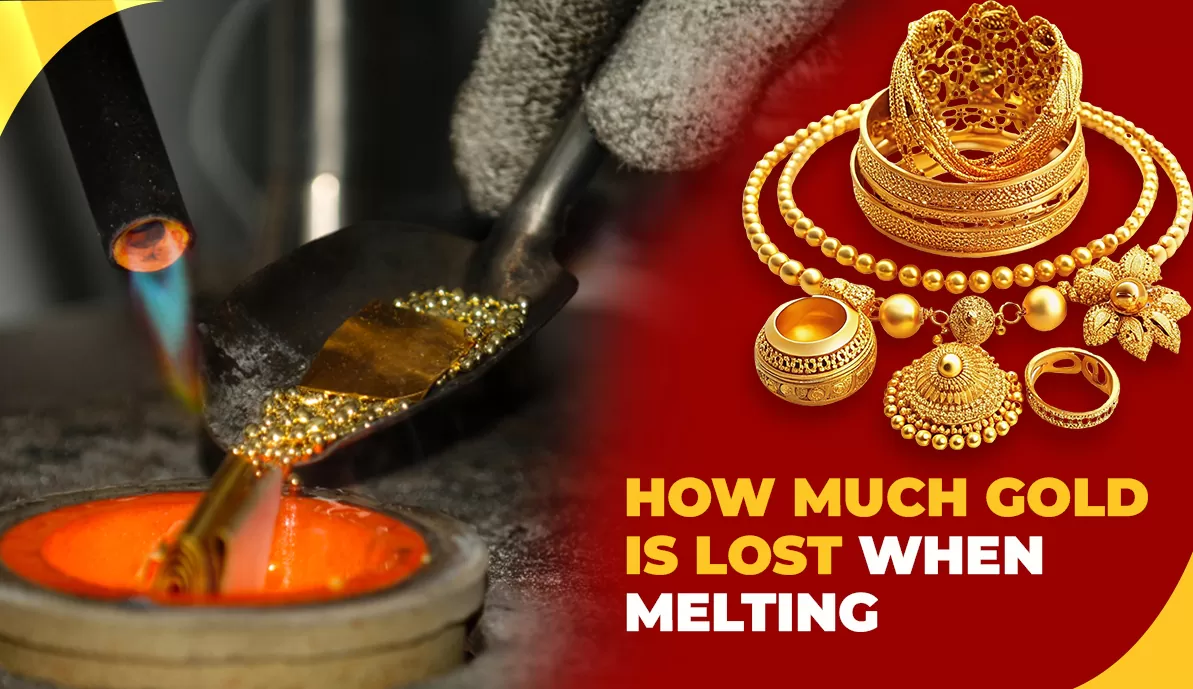Melting gold is a fascinating process steeped in precision and science. Yet, it often sparks curiosity. One question remains burning in the minds of those who are planning to sell– how much gold actually gets lost? The answer might surprise you. Gold, being a noble metal, doesn’t vanish into thin air. However, certain factors, such as impurities and the gold’s purity level, can make the process seem mysterious. In this blog, you will learn how much gold is lost during the melting process (if it is lost at all).
The Process of Melting Gold
Melting gold is an intricate process that combines science, skill, and precision. It begins with heating the gold in a high-temperature furnace. The furnace reaches temperatures exceeding 1,064°C (1,947°F), which is the melting point of gold. To ensure the gold melts efficiently, refiners use special crucibles made from materials like graphite or ceramic that can withstand extreme heat without contaminating the gold.
During the melting process, a chemical cleaning agent called flux is added. Flux serves a dual purpose: it separates impurities and prevents the gold from sticking to the crucible. As the gold turns into a molten state, these impurities rise to the surface, forming a slag layer. Refiners carefully skim off this layer, leaving behind molten gold in its purest form.
Once the impurities are removed, the molten gold is poured into molds of various shapes and sizes to cool and solidify. This process not only ensures purity but also allows the gold to be reshaped for future use. The entire operation is performed under strict conditions, minimizing the possibility of material loss and preserving the precious metal’s value.
Understanding Gold Purity and Its Impact
Gold purity plays a significant role in the melting process. Pure gold, or 24-karat gold, is nearly free from impurities and loses virtually nothing during melting. Lower-karat gold, such as 18-karat or 14-karat, contains alloys, silver, or nickel. When melted, these alloys may oxidise or separate. This leads to a minor weight difference that is almost negligible.
For example:
- 24-karat gold: Almost no weight loss since it’s nearly pure.
- 18-karat gold: Small loss due to alloy separation.
- 14-karat gold: Slightly higher loss compared to 18-karat gold because of its increased alloy content.
The “loss” isn’t your gold disappearing. It’s the non-gold components exiting the mix.
The Myth of Lost Gold
Gold doesn’t evaporate or degrade during melting. What’s often perceived as loss stems from impurities and dirt embedded in old gold jewellery. Before melting, pieces often contain solder, gemstones, or other materials that contribute to the initial weight. Once melted, these elements separate, leaving behind the purified gold.
Here’s the truth: The actual gold remains unscathed. You end up with precisely what you started with but without the non-gold extras.
Impurities: The Hidden Culprits
Old gold jewellery often carries more than just sentimental value. It can also harbor a surprising number of impurities. These impurities include metals like copper, silver, and nickel. They are added during the crafting process to make the jewellery more durable and alter its colour. Additionally, solder used to join gold pieces together, and even small traces of other materials can accumulate over time.
When gold is melted, these impurities separate from the precious metal. Flux plays a pivotal role here, binding with the non-gold components and allowing them to rise to the surface as slag. This layer is then removed, ensuring the gold is as pure as possible after the process.
For gold jewellery, the weight of these impurities can sometimes be substantial. They might include non-metallic materials like enamel or embedded stones, which contribute to the initial weight. During melting, these elements are either burned away or removed, leaving behind only the gold. While the gold remains intact, the removal of these extraneous materials can make it seem like there’s less of it. This may affect the weight of the metal when you sell old gold jewellery.
Why Weight May Seem To Change?
The change in weight after melting gold is often a source of confusion. Many people assume that some of their gold has been “lost” during the process. In reality, the weight difference arises from the removal of non-gold components, not a reduction in the gold itself.
Gold jewellery, especially lower-karat pieces, contains alloys like copper, silver, or zinc. These alloys are added to improve durability and make the jewellery suitable for everyday wear. During melting, these alloys either oxidize or separate from the gold, reducing the final weight of the purified metal.
For example, a 14-karat gold ring may initially weigh 10 grams. After melting, the refined gold might weigh around 5.8 grams because 14-karat gold is only 58.3% pure gold. The remaining weight comes from alloys and impurities that are removed during the process.
Another factor contributing to weight differences is any dirt, solder, or stones embedded in the jewellery. These materials can add significant weight but have no value once melted. When these are burned away or removed, the final weight reflects only the pure gold content.
It’s essential to understand that this perceived “loss” isn’t a loss of gold. Instead, it’s the transformation of your jewellery into its true form— pure gold, free from any unnecessary extras.
The Bottom Line
Gold melting is less about losing and more about refining. The gold you treasure doesn’t vanish; it transforms into a purer state. Any perceived loss is merely the extraction of impurities and non-gold components. By understanding the process and the role of purity, you can navigate gold melting with confidence. So, the next time someone mentions gold “loss,” remind them of this golden truth: it’s not lost; it’s simply refined perfection.


0 Comments